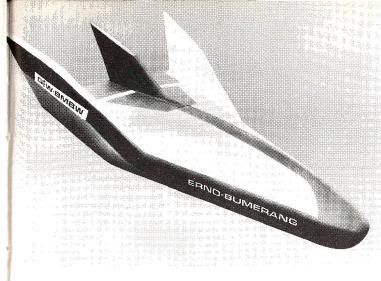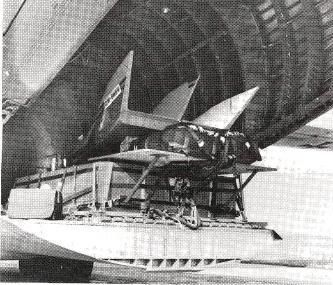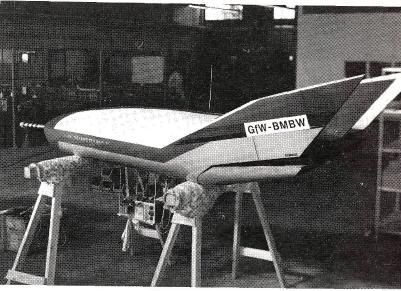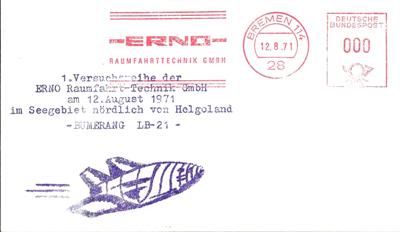Space Cover #172: Is a Bumerang really a Boomerang?Is a Bumerang really a Boomerang? No, now the rest of the story...
NASA's M-2, HL-10, X-24A and X-24B manned wingless aircraft or lifting bodies are well know by rocket plane collectors and some past SCOTW posts have highlighted these planes. Lesser known is that similar work was occurring in Europe at the same time in the 1960s and 1970s!
A major catalyst for the advancing the idea of the lifting-body aircraft concept was the thought of creating a re-usable space vehicle (eventually the space shuttle). Lifting body aircraft flights are widely considered to be shuttle precursor events.
The development of NASA's M-2 began in the early 1960s. By the mid-1960s a German Ministry, the Federal German Ministry for Education and Science, took note of NASA's work and began looking at the possibility of either a similar project emerging in Europe by the European Space Research Organization (ESRO - was an international organization founded by 10 European nations with the intention of jointly pursuing scientific research in space founded in 1964) or NASA contracting European companies to work on its lifting body programs. The ministry subsequently contracted ERNO Raumfahrttechnik of Bremen (typically just referred to as ERNO) to begin independent lifting-body studies to become the basis of a long-term lifting body research program.
ERNO evaluated a number of lifting body designs, then models were built and evaluated in multiple ways including tests in wind tunnels at speeds of Mach 4.5. The most promising of these models was a model designated Lifting Body 21 or LB-21. This model was then developed into a small, unmanned flight model named Bumerang (later referred to as Bumerang I) which measured about 10 feet long with a 6.2 foot span.
This image shows a central fin that was added to the earliest Bumerang configuration.

The flight testing of this lifting body program began with the unguided first flight of Bumerang I that took place off the coast of Heligoland, an island off of Germany in the North Sea on August 12, 1971. For this test, Bumerang I was mounted on a special pallet that was carried aloft by a Luftwaffe C.160 Transall and upon reaching the test flight location the pallet was pulled out of the rear loading door by parachute. Bumerang I separated from the pallet 2 1/2 seconds after launch and began an unpowered, unguided glide descent to a parachute landing in the target area west of the island. This successful test flight, denoted F1, demonstrated good flight characteristics and excellent stability.
The scan at the start of this post shows a cover cancelled for the first unguided flight canceled at ERNO's Bremen location on August 21, 1971. This is the only cover I have seen for any Bumerang flight.
The Bumerang test flight program continued with flights at the Salto di Quirra Test Range which is the inter-service missile test center operated by the Italian Air Force in southeast Sardinia near the town of Perdas de Fogu.
This image shows Bumerang II preparing for take-off from Salto di Quirra. Bumerang II is resting on its special pallet which will be drawn by parachute from the back of the C.160 launch aircraft.

This image shows Bumerang II during service. The radio-control receiver on this first guided version is extended below the aircraft for inspection

At the test range, test flights F2, F3, F4 and F5 were carried out using the radio-controlled Bumerang II. Interestingly, it was reported at the time that the flights were watched by two submarines of unknown nationality. Cold war espionage? All of these flights were considered to be successful.
This scan shows a card with a printed cachet showing the Bumerang cancelled with a German Bumerang pictorial cancel.

A Bumerang is on display at the Deutsche Museum of Munich in the astronautic gallery.
So if you are lucky enough to find a Bumerang cover...


















